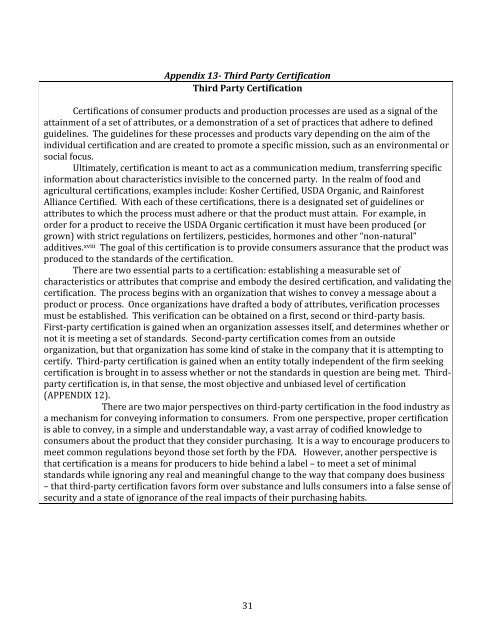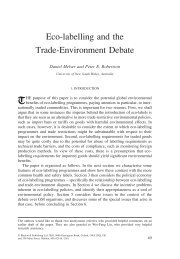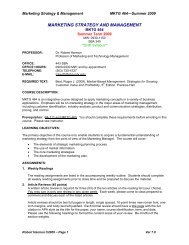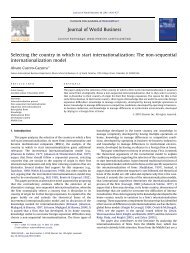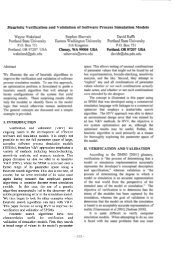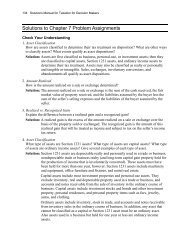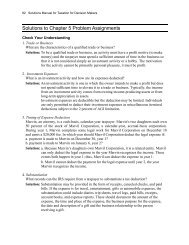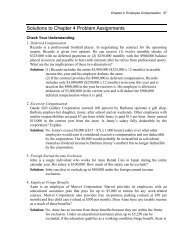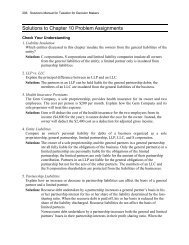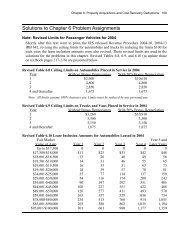Burgerville Supply Chain Case - School of Business Administration ...
Burgerville Supply Chain Case - School of Business Administration ...
Burgerville Supply Chain Case - School of Business Administration ...
Create successful ePaper yourself
Turn your PDF publications into a flip-book with our unique Google optimized e-Paper software.
Appendix 13- Third Party Certification<br />
Third Party Certification<br />
Certifications <strong>of</strong> consumer products and production processes are used as a signal <strong>of</strong> the<br />
attainment <strong>of</strong> a set <strong>of</strong> attributes, or a demonstration <strong>of</strong> a set <strong>of</strong> practices that adhere to defined<br />
guidelines. The guidelines for these processes and products vary depending on the aim <strong>of</strong> the<br />
individual certification and are created to promote a specific mission, such as an environmental or<br />
social focus.<br />
Ultimately, certification is meant to act as a communication medium, transferring specific<br />
information about characteristics invisible to the concerned party. In the realm <strong>of</strong> food and<br />
agricultural certifications, examples include: Kosher Certified, USDA Organic, and Rainforest<br />
Alliance Certified. With each <strong>of</strong> these certifications, there is a designated set <strong>of</strong> guidelines or<br />
attributes to which the process must adhere or that the product must attain. For example, in<br />
order for a product to receive the USDA Organic certification it must have been produced (or<br />
grown) with strict regulations on fertilizers, pesticides, hormones and other “non-natural”<br />
additives. xviii The goal <strong>of</strong> this certification is to provide consumers assurance that the product was<br />
produced to the standards <strong>of</strong> the certification.<br />
There are two essential parts to a certification: establishing a measurable set <strong>of</strong><br />
characteristics or attributes that comprise and embody the desired certification, and validating the<br />
certification. The process begins with an organization that wishes to convey a message about a<br />
product or process. Once organizations have drafted a body <strong>of</strong> attributes, verification processes<br />
must be established. This verification can be obtained on a first, second or third-party basis.<br />
First-party certification is gained when an organization assesses itself, and determines whether or<br />
not it is meeting a set <strong>of</strong> standards. Second-party certification comes from an outside<br />
organization, but that organization has some kind <strong>of</strong> stake in the company that it is attempting to<br />
certify. Third-party certification is gained when an entity totally independent <strong>of</strong> the firm seeking<br />
certification is brought in to assess whether or not the standards in question are being met. Thirdparty<br />
certification is, in that sense, the most objective and unbiased level <strong>of</strong> certification<br />
(APPENDIX 12).<br />
There are two major perspectives on third-party certification in the food industry as<br />
a mechanism for conveying information to consumers. From one perspective, proper certification<br />
is able to convey, in a simple and understandable way, a vast array <strong>of</strong> codified knowledge to<br />
consumers about the product that they consider purchasing. It is a way to encourage producers to<br />
meet common regulations beyond those set forth by the FDA. However, another perspective is<br />
that certification is a means for producers to hide behind a label – to meet a set <strong>of</strong> minimal<br />
standards while ignoring any real and meaningful change to the way that company does business<br />
– that third-party certification favors form over substance and lulls consumers into a false sense <strong>of</strong><br />
security and a state <strong>of</strong> ignorance <strong>of</strong> the real impacts <strong>of</strong> their purchasing habits.<br />
31


